Although India’s school education system is severely criticised in national and international surveys, these indictments are not applicable to the country’s estimated 310,000 licensed private unaided schools. Leaders of India’s top-ranked day, boarding and international schools offer valuable advice on good management and best practices – Dilip Thakore
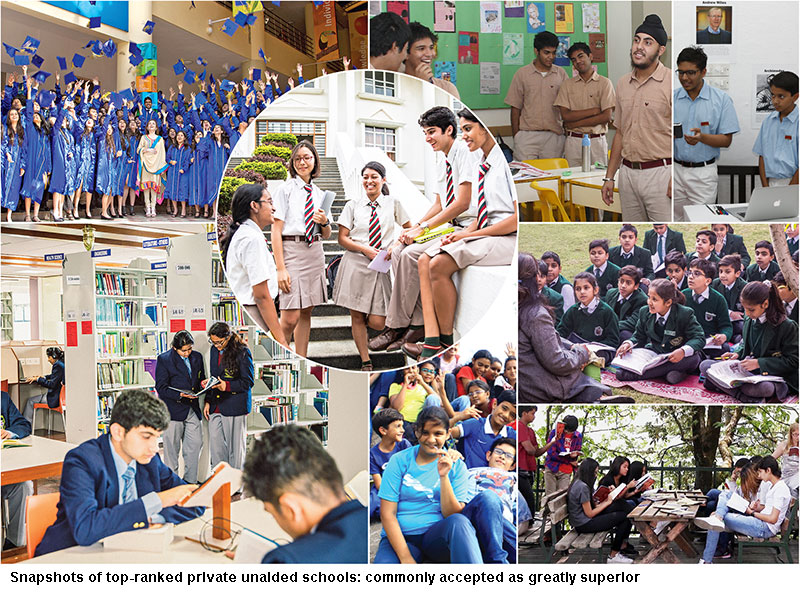
At the fag end of the five-year term in office of the BJP-led NDA government at the Centre, a pall of gloom continues to envelope Indian education — from pre-primary to Ph D. For a start, BJP governments at the Centre and in 16 states have reneged on the party’s General Election 2014 manifesto promise to raise annual expenditure (Centre plus states) on education from the 3-3.50 percent GDP rut in which it has been mired for the past 60 years, to 6 percent. On the contrary, with scholars of doubtful credentials and scholarship raised to high positions within the academy, textbook committees and institutions of education governance, learning outcomes have fallen across the board, even as the Centre’s allocation of Rs.85,010 crore for public education in the Union budget 2018-19 was less than the budgeted (but not spent) provision in 2015-16, and aggregated a mere 0.45 percent of GDP.
The neglect of public education by the BJP-led government at the Centre is confirmed by the grandiosely nomenclatured NITI (National Institution for Transforming India) Aayog — a government think tank established in 2015 to replace the disastrous Soviet-inspired Planning Commission whose inputs-based, unrealistic 12 Central plans devastated the high potential post-World War II Indian economy. “Government spending on education as a whole should be increased to at least 6 percent of GDP (as recommended by the Kothari Commission way back in 1966 — Editor) by 2022. At present, allocations to education by the Centre and states remain close to 3 percent, while according to the World Bank, the world average in this regard (sic) is at 4.7 percent,” says a recently published (November), cautiously worded NITI Aayog report titled Strategy for New India @ 75.
That education — especially all-important primary/elementary education — of the world’s largest and most high potential children and youth population is down in the dumps is confirmed by the latest Annual Status of Education Report 2018, compiled and published by the independent, globally reputed Pratham Education Foundation (estb. 1994) whose 30,000-plus volunteers field tested children in primary/elementary education in rural India. ASER 2018 released on January 15 in New Delhi presented the learning outcomes of 546,527 children in the age group 3-16 of 354,944 households in all 596 districts of rural India.
Unsurprisingly, ASER 2018 indicates that of all children enrolled in class VIII — the final year of elementary education — more than one-fourth (national average of 27 percent) are unable to read a ‘story’ written in class II textbooks — a “number unchanged from 2016”. Worse, only 44 percent of all children in class VIII can solve a three-digit-by-1-digit numerical division sum correctly, i.e, the majority 56 percent cannot do simple divisional sums. “The learning levels of children are indicators of effectiveness or productivity of the education system. Anyone looking at the levels in 2008 and 2018 would conclude that its productivity is down by nearly 9 percentage points, or about 18 percent,” writes Madhav Chavan, president of the Pratham Education Foundation in his foreword to ASER 2018.
Curiously, neither governments at the Centre and in the states, nor the country’s self-serving intelligentsia connect the pathetic condition of rural schools which fail to provide even the most rudimentary education, with poor farm productivity and widespread agrarian distress prompting 34 suicides per day in the countryside. Day after day, media reports and analyses attribute the near collapse of the rural economy to poor prices for farm produce, lack of access to bank credit, inadequate irrigation, soil despoliation etc. Widespread illiteracy and utter lack of problem-solving skills of 60 percent of the population toiling in the rural hinterland — the inevitable result of the non-performing education system — is seldom mentioned.
Nineteen years after your editors following publication of the devastating PROBE (Public Report on Basic Education) of 1998 which revealed that the infrastructure of state government schools across the country was in a shambles, and 25 percent of teachers in government primaries are absent every day, launched EducationWorld with the mission to “build the pressure of public opinion to make education the #1 item on the national agenda”, on January 16 the lead editorial in the Times of India acknowledged that “while India’s agrarian crisis is well recognised by now, less mentioned is that India also has a full-blown education crisis on its hands”. On the same day the Indian Express belatedly acknowledged that “poor learning outcomes remain the Achilles’ heel of the country’s primary and secondary education system”, and advised the Central and state governments to “join the dots between the predicaments it faces in the economy and the malaise in the educational sector”.
However, the problem of Indian education isn’t only of inadequate funding. Rock-bottom learning outcomes which are a feature of education at all levels — pre-primary to Ph D — are also the consequence of poor institutional management. This omnipresent reality of contemporary Indian education lends substance to the argument of intellectuals and media pundits (including Swaminathan Aiyar of the Economic Times) who argue that the major problem of Indian education is not inadequacy of resources as much as inefficient use of budgeted outlays.
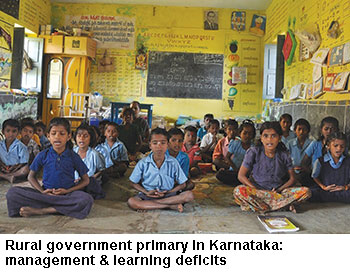 Yet, this argument based on World Bank data which indicates that Communist China allocates a mere 2.5 percent of GDP for public education (cf. India’s 3-3.5 percent) is disingenuous. For one, China’s GDP is five times the size of India’s. Moreover, over 80 percent of its education budgetary outlay is for primary education cf. India’s 60 percent. Higher education access in PRC (People’s Republic of China) is ruthlessly meritocratic, restricted to only the brightest and best schools-leavers who top its rigorous gaokao — the world’s largest school-leaving exam — and means-tested tuition fees in higher education institutions are several multiples of the rock-bottom fees demanded by Indian universities. Proponents of the expenditure efficiency-first argument need to grasp the elementary proposition that government primaries have to be modern, well-equipped and well-administered institutions to attract and retain children, a missing prerequisite of Indian education.
Yet, this argument based on World Bank data which indicates that Communist China allocates a mere 2.5 percent of GDP for public education (cf. India’s 3-3.5 percent) is disingenuous. For one, China’s GDP is five times the size of India’s. Moreover, over 80 percent of its education budgetary outlay is for primary education cf. India’s 60 percent. Higher education access in PRC (People’s Republic of China) is ruthlessly meritocratic, restricted to only the brightest and best schools-leavers who top its rigorous gaokao — the world’s largest school-leaving exam — and means-tested tuition fees in higher education institutions are several multiples of the rock-bottom fees demanded by Indian universities. Proponents of the expenditure efficiency-first argument need to grasp the elementary proposition that government primaries have to be modern, well-equipped and well-administered institutions to attract and retain children, a missing prerequisite of Indian education.
Nevertheless it is undoubtedly true that the vast majority of Indian schools — and indeed all education institutions — are poorly managed. Left economists and intellectuals who despite the collapse of communism/socialism world over continue to dominate the Indian academy, have brainwashed educationists and teachers about the evils of business and commercial enterprises run by avaricious capitalists and lackey managers. Consequently few, if any, organisational best practices of India’s top-ranked — inevitably private sector — companies have crossed over into academic institutions, universities included.
That education institutions, especially K-12 schools in contemporary India, are very poorly managed is confirmed by a unique 2014 joint study report titled Does Management Matter in Schools? authored by four researchers (Nicholas Bloom, Renata Lemon, Rafaella Sadun and John Van Reenen) of the blue-chip Stanford and Cambridge universities, Harvard Business School and the London School of Economics. These researchers collected data on operations, targets and human resources management practices in 1,800 schools educating 15-year-olds in eight countries, viz, the UK, USA, Sweden, Canada, Germany, Italy, Brazil and India, and came to the conclusion that “higher management quality is strongly associated with better educational outcomes”.
To determine management quality, the researchers assessed each school under four broad areas of management — operations: meaningful processes that allow children to learn over time, teaching methods that ensure all pupils master the learning objectives, whether the school uses assessment to verify learning outcomes at critical stages, makes data easily available and adapts pupil strategies accordingly; monitoring: whether processes enabling continuous improvement and lectures are captured and documented; target setting: whether the institutional department and individual targets cover a sufficiently broad range of metrics, and people/ talent management: whether there is a systematic approach to identifying good and bad performance, rewarding teachers proportionately, dealing with underperformers and promoting and retaining good performers.
Against the backdrop of traditional indifference of academics worldwide to industry best practices, and the faintly concealed disdain that the professariat has for business professionals, it’s hardly surprising that the authors of the study came to the conclusion that “the adoption of (good) managerial processes in schools is fairly limited”. “On an index of 1 to 5, the average management score across all countries is 2.27, which corresponds to low level of adoption of many of the managerial processes included in the questionnaire,” says the report.
 Surprisingly, the learned authors of the study award the highest management score to the UK (2.9), followed by Sweden, Canada and the US (all 2.8). Inevitably, India has the lowest score (1.7). “In India… the vast majority of schools (82 percent) score below 2 and no school scores above 3, indicating that Indian schools seem to adopt very weak management practices, with weak monitoring, targets and incentives,” comment the authors of the study. However, it’s pertinent to note that while in the OECD countries government schools were assessed, in India 318 private (government)-aided schools were evaluated for purposes of this study of management processes and practices. Evidently, the authors of the study are well aware that evaluating a representative sample of this country’s 1.2 million government schools according to these metrics would be a futile exercise.
Surprisingly, the learned authors of the study award the highest management score to the UK (2.9), followed by Sweden, Canada and the US (all 2.8). Inevitably, India has the lowest score (1.7). “In India… the vast majority of schools (82 percent) score below 2 and no school scores above 3, indicating that Indian schools seem to adopt very weak management practices, with weak monitoring, targets and incentives,” comment the authors of the study. However, it’s pertinent to note that while in the OECD countries government schools were assessed, in India 318 private (government)-aided schools were evaluated for purposes of this study of management processes and practices. Evidently, the authors of the study are well aware that evaluating a representative sample of this country’s 1.2 million government schools according to these metrics would be a futile exercise.
It’s important to note that this severe indictment of the school system in India, is not applicable to the country’s 303,725 licensed (‘recognised’) private unaided schools, commonly accepted as greatly superior to government and private aided schools in terms of better administration, management and learning outcomes. Invariably, English-medium with contemporary pedagogies, some of these schools of over 150 years vintage, are the hate objects of communists, socialists and leftists who dominate the academy and the media. Nevertheless, a substantial number of them are defined by excellent infrastructure, high quality English-medium foreign exam board affiliation and curriculums, and have established global reputations that attract students from around the world, especially from South-east Asian and African countries.
Unsurprisingly, private, unaided (aka independent) schools dominate the annual EducationWorld India School Rankings (EWISR) of the country’s Top 1,000 schools which are rated and ranked by over 15,000 sample respondents drawn from educators, teachers, SEC (socio-economic category) A parents and students countrywide, on 14 parameters of primary-secondary education excellence. In this connection, it’s pertinent to note that the annual EWISR is the world’s largest school rankings survey and the mirror opposite of competitive jury ranking surveys, based upon the evaluations of a handful of esoteric educationists with limited awareness of schools dispersed across the country.
But although the country’s Top 1,000 unaided, independent private schools are undoubtedly streets ahead of government and quasi-autonomous private aided schools, the moot point is whether they are as well managed as the private unaided ‘independent’ primary-secondaries of developed OECD countries, especially the venerated public (i.e, private exclusive) schools of Britain, the US and Switzerland among other countries.
On several metrics, India’s best private schools which routinely top the annual EWISR can give the best in the West a run for their money. For one, they provide excellent academic curriculums and certification not only of the globally respected Delhi-based CISCE (Council for the Indian School Certificate Examinations) and CBSE (Central Board of Secondary Education) boards but also of the Hague/Geneva-based International Baccalaureate, the UK-based CAIE (Cambridge Assessment International Education) and Edexcel, at a fraction (20-25 percent) of the tuition fees levied by Western independent schools. Moreover, India’s climatic conditions enable their students to play outdoor field games and sports — for which most of them are superbly equipped — all year round.
“India’s top-ranked new genre international schools which provide IB and Cambridge curriculums, international faculty and often expatriate headmasters and offer excellent sports, games and cultural education at one-fourth and a fifth of the fantastic fees demanded by Western private schools, are excellent value, especially for Indians settled abroad. In fact, there’s no reason why they shouldn’t interest native British and American families looking to provide their children highest quality private school education,” says Sanjeev Bolia, chairman and managing director of the Kolkata-based Afairs Exhibitions & Media Pvt. Ltd, a pioneer schools exhibitions company which organises year-round exhibitions in Dubai, Abu Dhabi, Sharjah, Bangkok, Dhaka and Seoul in which India’s top-ranked schools showcase their academic and extra-curricular education facilities.
Although there’s growing confidence and optimism within the top brass of India’s premier schools that the holistic primary-secondary education — an excellent mix of gymkhana sports and games, co-curricular cultural programmes and globally respected academic education — is on a par with the best private schools abroad, Shomie Das, the Cambridge educated former physics teacher at the Gordonstoun School, Scotland, former headmaster of the top-ranked Doon School, Dehradun and Lawrence School, Sanawar, and currently the Hyderabad-based chairman of the People’s Combine Educational Initiatives Pvt. Ltd which runs the Oakridge International chain of five IB-affiliated schools, strikes a discordant note.
According to Das, “archaic traditions and environmental factors” make it impossible for even the highest ranked Indian schools to match the management practices and learning outcomes of best Western private schools such as Eton, Harrow, Andover, Collège du Léman etc. Das believes that although the best Indian private schools offer excellent infrastructure and sports facilities, their principals are rarely given the autonomy — especially the financial freedom — of their OECD counterparts. Secondly, for inherited ideological reasons there is a strong in-built resistance in India’s education institutions across the board to adopt and adapt industry management practices, and thirdly even the highest ranked Indian schools are forced to teach to exams and are “strangulated” by rote-oriented and often obsolete curriculums of the examination boards. This is one reason why several top-ranked schools — including the Doon School Dehradun — are opting to affiliate with offshore examination boards such as IB and CAIE.
“The constraints of India’s schools — including top-ranked institutions — are mainly external. Of them one of the biggest constraint is a chronic deficit of dedicated professional teachers. Unfortunately the system doesn’t encourage the best graduates to enter the teaching profession which is usually the last choice of university graduates, and no amount of training can enthuse reluctant entrants into this profession,” laments Das.
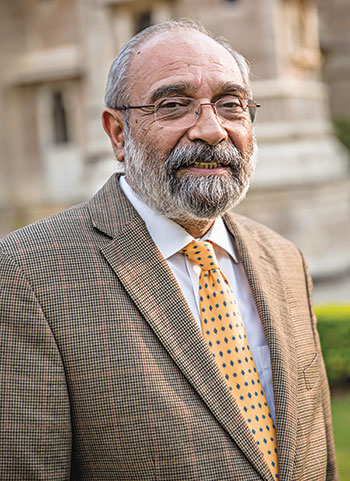 However Sumer Singh, the highly respected former principal of the vintage Lawrence School, Sanawar (estb. 1847) and Daly College, Indore (1882), both consistently high-ranked by EducationWorld, is less pessimistic. “India’s best private schools are transforming from factory-style schools of the Industrial Revolution era which feed information to students, into institutions which develop critical thinking and creative skills and their individual capabilities based upon their aptitudes. India’s best, top-ranked schools provide excellent holistic education with enriching cultural and community outreach programmes which develop students into well-rounded and grounded adults. The problem of Indian education is at the tertiary, college and university levels,” says Singh who in his capacity as a director of Round Square, London, board member of the World Leading Schools Association, Amsterdam and the G-20 Schools, is well-qualified to make this assessment.
However Sumer Singh, the highly respected former principal of the vintage Lawrence School, Sanawar (estb. 1847) and Daly College, Indore (1882), both consistently high-ranked by EducationWorld, is less pessimistic. “India’s best private schools are transforming from factory-style schools of the Industrial Revolution era which feed information to students, into institutions which develop critical thinking and creative skills and their individual capabilities based upon their aptitudes. India’s best, top-ranked schools provide excellent holistic education with enriching cultural and community outreach programmes which develop students into well-rounded and grounded adults. The problem of Indian education is at the tertiary, college and university levels,” says Singh who in his capacity as a director of Round Square, London, board member of the World Leading Schools Association, Amsterdam and the G-20 Schools, is well-qualified to make this assessment.
In the pages following we present interviews with leaders of some of India’s top-ranked day, boarding and international schools to provide education policy formulators, educationists, principals and teachers some insights into their management and governance mantras.
Vasant Valley School, Delhi
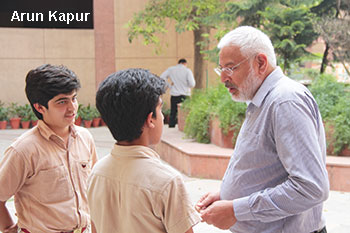 A history postgrad of Delhi University, Arun Kapur began his career as a teacher in The Doon School, Dehradun, followed by a stint in the Uppingham School, UK and the British School, Delhi. In 1990, he was invited by media tycoon and India Today publisher Aroon Purie to conceptualise and launch the group’s Vasant Valley School (VVS), Delhi. In the EW India School Rankings 2018-19, VVS is ranked the country’s #1 co-ed day school and has been ranked among the Top 5 nationwide for the past eight years. Currently, this CBSE-affiliated co-ed K-12 school has 1,318 students mentored by 175 teachers on its muster rolls.
A history postgrad of Delhi University, Arun Kapur began his career as a teacher in The Doon School, Dehradun, followed by a stint in the Uppingham School, UK and the British School, Delhi. In 1990, he was invited by media tycoon and India Today publisher Aroon Purie to conceptualise and launch the group’s Vasant Valley School (VVS), Delhi. In the EW India School Rankings 2018-19, VVS is ranked the country’s #1 co-ed day school and has been ranked among the Top 5 nationwide for the past eight years. Currently, this CBSE-affiliated co-ed K-12 school has 1,318 students mentored by 175 teachers on its muster rolls.
What in your opinion are the three defining characteristics of VVS K-12 education?
The high quality of our teachers and students is our most important asset. They have ensured that we are one of the country’s top-ranked schools in all surveys and league tables. Therefore, our first differentiating characteristic is the easy and high-quality interaction between our teachers and students. Secondly, the standards maintained by our excellent faculty, not merely in terms of their domain knowledge but equally in the aspects of life skills and empathy. Thirdly, we encourage students — and teachers — to make their own choices about what is important to them and how they want to add value to their education experience. Every child from class III onwards, and every teacher in school, writes her own individual plan for the year.
How satisfied are you with the academic track record of VVS?
In whatever way we define ‘academic track record’ — excellent average score in the CBSE class XII school-leaving board exams, or in terms of assessing whether we have been able to address the diverse needs and learning capabilities of students in our classrooms and beyond, and provide all our students the tools of learning — VVS has done very well. However, we are not complacent or satisfied and are always looking for ways and means to raise the bar. We have an excellent track record, but we will continue to work to do even better in all areas.
How well-prepared are VVS alumni for higher education and adult workplaces?
Our placement record for colleges in India and overseas is impressive. I am pleased to say that our alumni are in positions of responsibility and influence worldwide. Moreover, the divergent career paths our alumni are following is a matter of great pride for us. They have been well-prepared for life after school in institutions of higher education and in adult workplaces, and are using their learning and the strong moral compass that we try and inculcate in them, effectively and with honour.
What are the new pedagogy/ education innovations, if any, introduced in VVS?
Vasant Valley School’s Five Areas of Development programme for all students has become the pivot of the school’s learning systems since 2017. Under this programme, each student has to chart a Road Map which sets out her personal growth and progress priorities for the year. On the academic front, the ‘subject’ or domain areas become closely integrated and every student’s progress is monitored by a subject/domain-specific dean. The domains are integrated and every child, from class III onwards, reviews her learning through Integrated Learning Assessments, which test skills of reading, expression, comprehension and computation. In Vasant Valley School, we have combined the science and social science domain areas to give our students a learning experience as close to life as possible.
When these new systems were introduced to the learning experience in VVS in 2017, we had no idea Finland would include them in its ‘100 Best Ideas in Education list’ for two consecutive years. We are proud to be pioneers in changing the way children learn.
Heritage Xperiential Learning School, Gurgaon
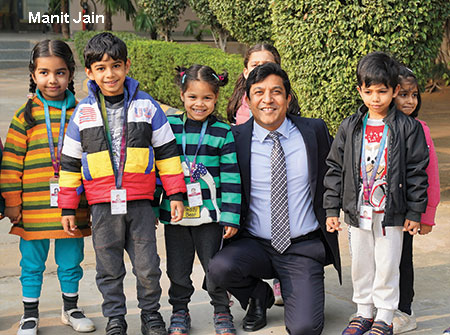 An alumnus of the Harvard Graduate School of Education, Manit Jain is co-founder and director of three Heritage schools in Delhi NCR including the Heritage Xperiential Learning School (HXLS, estb. 2003), Gurgaon. In the EW India School Rankings 2018-19, HXLS is ranked India’s #2 and #1 in Gurgaon in the co-ed day schools category, and has been ranked among the Top 10 nationally for the past five years. Currently, this CBSE K-12 school has 3,500 students (including 1,700 girls) mentored by 400 teachers (including 11 expatriate leadership trainers) on its rolls.
An alumnus of the Harvard Graduate School of Education, Manit Jain is co-founder and director of three Heritage schools in Delhi NCR including the Heritage Xperiential Learning School (HXLS, estb. 2003), Gurgaon. In the EW India School Rankings 2018-19, HXLS is ranked India’s #2 and #1 in Gurgaon in the co-ed day schools category, and has been ranked among the Top 10 nationally for the past five years. Currently, this CBSE K-12 school has 3,500 students (including 1,700 girls) mentored by 400 teachers (including 11 expatriate leadership trainers) on its rolls.
What in your opinion are the three defining characteristics of HXLS’ K-12 education?
The first differentiating characteristic is our belief that experience and reflection are at the heart of all learning. The school’s curriculum uses integrated projects that allow students to engage with real world issues while addressing the content of different subjects. Secondly, HXLS is a true learning community for students, teachers, school leaders and even non-teaching staff. We work within a continuous school improvement framework tested in over 1,300 schools worldwide, and check and reflect upon every improvement initiative. Teachers undergo 30 full days of professional development training every year.
Thirdly, we have created structures that foster the spirit of collaboration, collective accountability and distributed leadership. Teachers and leaders meet horizontally, as class groups, and vertically as subject or other domain groups such as socio-emotional learning, expeditionary learning, numeracy and literacy, and plan and review outcomes and processes together. Through this structure, we have developed a collective empowerment rather than top-down organisational culture in HXLS.
How satisfied are you with the academic track record of HXLS?
Our students have performed very well in high-stakes examinations. In terms of average scores in CBSE’s class XII exam, HXLS is consistently ranked among the top schools countrywide and averages above 90 percent. In the IB diploma exams as well, the average of 36 points of our students is among the best in this part of the country. But for us, continuous diagnostic formative assessments are the most important evaluation. On this metric too, we are satisfied with the progress of our students. We also use several globally benchmarked assessments, and have found our students are on a par with the best performers globally.
How well-prepared are HXLS alumni for higher education and adult workplaces?
Since our focus is on holistic well-rounded education, we work on students’ attitudes as much as on developing life skills and knowledge. Our students are admitted into the best colleges and universities in India and abroad. Our data indicates that all our school graduates go to college and complete their higher education. Moreover, feedback from employers indicates that HXLS alumni are well-equipped to manage real-life situations in workplaces.
What are the new pedagogy/ education innovations, if any, introduced in HXLS?
The HXLS curriculum and organisational culture is inspired by Expeditionary Learning Schools, USA — perhaps the oldest and most recognised network of schools in the space of experiential learning globally. Our children learn by undertaking multi-disciplinary projects that have authentic purpose. Examples are greening their neighbourhoods, gathering data and working with NGOs to establish biodiversity parks or bikepaths in cities.
In HXLS, all learning is student-led and most instruction is personalised. Moreover, we don’t conduct any formal pre-announced or graded tests/examinations until class VIII, and don’t impose any uniforms or textooks.
Delhi Public School, RK Puram
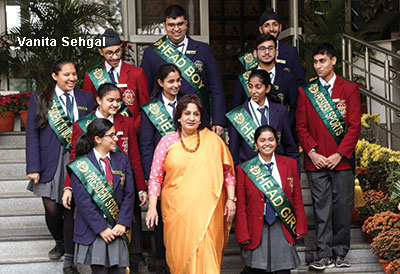 An alumna of Delhi University who signed up as teacher with Delhi Public School, R.K Puram (DPS-RKP), Delhi in 1984, Vanita Sehgal was promoted to the principal’s office in 2016. A pioneer school of the Delhi Public Schools Society (estb. 1937) which has promoted 220 highly-reputed DPS owned and franchised schools in India and abroad, DPS-RKP is ranked India’s #1 co-ed day-cum-boarding school in the EducationWorld India School Rankings 2018-19, and among the Top 3 for the past five years. Currently, this CBSE (Delhi) class VI-XII school has 4,290 students (including 1,943 girls) mentored by 210 teachers on its muster rolls.
An alumna of Delhi University who signed up as teacher with Delhi Public School, R.K Puram (DPS-RKP), Delhi in 1984, Vanita Sehgal was promoted to the principal’s office in 2016. A pioneer school of the Delhi Public Schools Society (estb. 1937) which has promoted 220 highly-reputed DPS owned and franchised schools in India and abroad, DPS-RKP is ranked India’s #1 co-ed day-cum-boarding school in the EducationWorld India School Rankings 2018-19, and among the Top 3 for the past five years. Currently, this CBSE (Delhi) class VI-XII school has 4,290 students (including 1,943 girls) mentored by 210 teachers on its muster rolls.
What in your opinion are the three defining characteristics of DPS-RKP K-12 education?
Firstly, DPS-RKP prides itself on following an education system in which the faculty is deeply involved and where there is absolute transparency and direct communication with parents, allowing active participation by them. Secondly, the school has a strong, focussed student body. Thirdly, it promotes student-centred education which evolves to meet the demands of the present, bearing in mind expectations of the future.
How satisfied are you with the academic track record of DPS-RKP?
The school has been continuously excelling in terms of CBSE board results, NTSE (6 in 2018) and JSTSE (21 in 2018 — the highest number of any Delhi school) — results, admission into foreign and the best Indian professional colleges and universities. But we haven’t reached our zenith; there is much more to be achieved.
How well-prepared are DPS-RKP alumni for higher education and adult workplaces?
DPS, RK Puram has numerous clubs which develop co-curricular education and life skills of our students. These clubs and societies serve to develop the organisational skills of our students and prepare them for adult life and workplaces.
What are the new pedagogy/ education innovations, if any, introduced in DPS-RKP?
Besides teaching through Smart boards, we have installed a Think Lab where students undertake research projects. Moreover, we have encouraged the promotion of clubs and societies such as the Entrepreneurship Club, TED Talks, Automobile Club, Aerospace Society and Culinary Club to encourage co-curricular education and out-of-the box thinking. Each and every class hosts a grand assembly, which provides students opportunities to showcase their talents. Our senior students teach in municipal schools and visit neighbouring villages which is a great learning experience for them.
Rishi Valley School, Chittoor
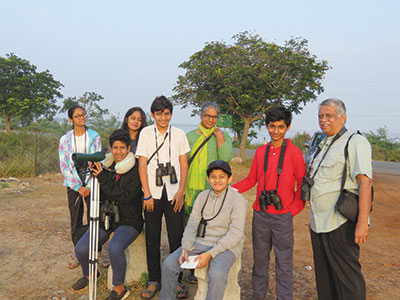 An English and linguistics alumna of IIT-Madras with several years of English teaching experience in India and the UK, Dr. D. Anantha Jyothi is principal of the Rishi Valley School (RVS), Chittoor (Andhra Pradesh), founded in 1926 by philosopher-seer J. Krishnamurti (1895-1986). In the annual EW India School Rankings, the CISCE-affiliated RVS, which has 371 students mentored by 63 teachers, has been ranked India’s #1 co-ed boarding school for the past four years consecutively.
An English and linguistics alumna of IIT-Madras with several years of English teaching experience in India and the UK, Dr. D. Anantha Jyothi is principal of the Rishi Valley School (RVS), Chittoor (Andhra Pradesh), founded in 1926 by philosopher-seer J. Krishnamurti (1895-1986). In the annual EW India School Rankings, the CISCE-affiliated RVS, which has 371 students mentored by 63 teachers, has been ranked India’s #1 co-ed boarding school for the past four years consecutively.
RVS has been voted India’s #1 co-ed boarding school in 2018-19 and for four years consecutively by over 15,000 sample educators, principals, parents and teachers in the annual EW India School Rankings. What in your opinion are the three defining characteristics of RVS primary-secondary education?
J. Krishnamurti’s educational philosophy with its emphasis on freedom from fear, encouragement of egalitarian peer relationships within the students’ body and mutually respectful, non-judgmental teacher-pupil relationships. Secondly, a vibrant students and teachers community. And thirdly, the school’s involvement with the land and neighbouring communities.
How satisfied are you with the academic track record of RVS?
The pulse and rhythm of the academic year has its ups and downs but RVS is always an academically alive and energetic arena. Our examination board results are good and the career trajectory of RVS alumni is varied and interesting. The feedback we receive indicates that the school makes a deep impact on most of our students.
How well-prepared are RVS alumni for higher education and adult workplaces?
Middle and senior school conversations tend to revolve around the inner landscape of students such as fear, comparisons/competition, expectations, biases. We encourage discussions around right livelihoods, sustainability and alternate lifestyles. Although there are no definitive guidelines or prescriptive notions on what is a right livelihood or a meaningful career path, conversations centred around them provide students a foundation to carve out career paths that suit their aptitudes and capabilities. This perhaps makes them better prepared for adult workplaces.
What are the new pedagogy/ education innovations, if any, introduced in RVS?
Rishi Valley School has never been a pedagogy-driven institution. It is essentially driven by teachers and students. When a teacher is passionate about a subject, the enthusiasm is transferred to students and vice versa. However within RVS, there has always been great emphasis on active learning, an environment in which the spirit of inquiry is kept alive and questions are always encouraged.
The Doon School, Dehradun
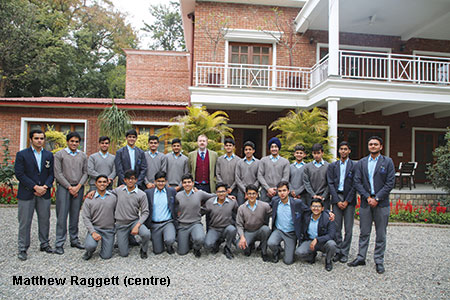 An alumnus of Newcastle (UK) and Charles Sturt (Australia) universities and former principal of the Leipzig International School (Germany), Matthew Raggett was appointed headmaster of The Doon School, Dehradun (estb. 1935) in 2016 after a global search. Over the past eight decades, Doon School has acquired a formidable reputation and has been ranked the country’s #1 all-boys boarding school for the past four years in the annual EducationWorld India School Rankings. Hitherto affiliated with the CISCE (Delhi) examination board, Doon School now uses Cambridge (UK) as an assessment board in class X and IB (Geneva) and CISCE boards in class XII. Currently, this class VI-XII primary-secondary has 560 students (including 35 NRIs) from 26 states of the Indian Union mentored by 74 teachers.
An alumnus of Newcastle (UK) and Charles Sturt (Australia) universities and former principal of the Leipzig International School (Germany), Matthew Raggett was appointed headmaster of The Doon School, Dehradun (estb. 1935) in 2016 after a global search. Over the past eight decades, Doon School has acquired a formidable reputation and has been ranked the country’s #1 all-boys boarding school for the past four years in the annual EducationWorld India School Rankings. Hitherto affiliated with the CISCE (Delhi) examination board, Doon School now uses Cambridge (UK) as an assessment board in class X and IB (Geneva) and CISCE boards in class XII. Currently, this class VI-XII primary-secondary has 560 students (including 35 NRIs) from 26 states of the Indian Union mentored by 74 teachers.
What, in your opinion, are the three defining characteristics of Doon’s class VI-XII education?
A Doon School education is the sum of numerous factors, but three stand out. First, many opportunities are provided to students to discover themselves and find a mentor who could be teacher, senior or peer. This is also true for our teachers, which is why they are so interested, engaged and hard working. There is a free choice of courses and activities, and the opportunity to try everything before students choose their own paths. Secondly, the exposure and institutional support students get from teachers, seniors, student leaders and alumni is unparalleled. And third, the diversity of the student body — Doon is open to students from all backgrounds because of our generous scholarship and financial aid programme — enriches our students’ education experience.
How satisfied are you with the academic track record of Doon?
Although we are striving to improve our academic performance in traditional examinations, it’s reassuring that 75 percent of Doon School students who apply to universities overseas, especially to the US and UK, receive offers from their first-choice institution. The performance of our students in SAT and ACT, and the large number of offers they receive from universities is also a measure of academic success.
How well-prepared are Doon alumni for higher education and adult workplaces?
Doon school-leavers are very well prepared for higher education. In their school years, they have experienced a rigorous academic programme that requires them to think critically and creatively and to communicate their ideas to others. They have been prepared to collaborate, negotiate, solve problems and work hard, often long into the night when required. My belief is that they are also ethical, empathetic and ready to do the right thing, even when no one is watching. There are many outstanding role models among our alumni who are playing their part in helping build a meritocratic India.
What are the new pedagogy/ education innovations, if any, introduced in Doon School?
We are committed to teaching our students to think, collaborate, communicate, analyse, synthesise and reach conclusions based on critical evaluation of well-sourced facts. Our curriculum uses the Cambridge IGCSE syllabus for classes VI-X and the CISCE or IB Diploma for class XI-XII students. We also invest a great deal of time and energy into continuous professional development of our teachers, and do our best to ensure this is the most exciting institution in the country for them to work.
Dhirubhai Ambani International, Mumbai
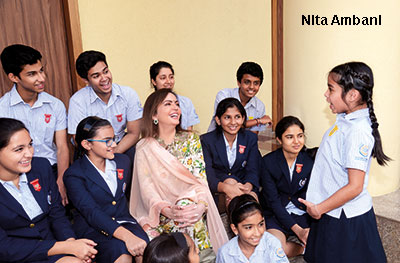 A commerce graduate of Mumbai University and director of Reliance Industries Ltd, India’s largest private sector company (revenue: Rs.430,731 crore in 2018-19), Nita Ambani is the founding-chairperson of the CISCE (Delhi), CAIE (UK) and IB (Geneva)-affiliated Dhirubhai Ambani International School, Mumbai (DAIS, estb. 2003). In the annual EducationWorld India School Rankings, DAIS has been ranked India’s #1 co-ed day international school for the past six years. Currently, DAIS has an enrolment of 1,066 students (including 150 foreign nationals) mentored by 142 teachers (including 20 foreign nationals).
A commerce graduate of Mumbai University and director of Reliance Industries Ltd, India’s largest private sector company (revenue: Rs.430,731 crore in 2018-19), Nita Ambani is the founding-chairperson of the CISCE (Delhi), CAIE (UK) and IB (Geneva)-affiliated Dhirubhai Ambani International School, Mumbai (DAIS, estb. 2003). In the annual EducationWorld India School Rankings, DAIS has been ranked India’s #1 co-ed day international school for the past six years. Currently, DAIS has an enrolment of 1,066 students (including 150 foreign nationals) mentored by 142 teachers (including 20 foreign nationals).
What in your opinion are the three defining characteristics of DAIS K-12 education?
We have always endeavoured to build a happy school, providing children with a learner-friendly and supportive environment focused on their well-being. Secondly, our emphasis is on holistic development of students. We accord equal importance to academics and children’s active participation in a wide spectrum of sports and co-curricular activities within and outside the school. Thirdly, we recognise and celebrate the individuality and unique potential of every child by providing an inclusive learning environment. Over the years, we have realised that adherence to these institutional priorities has motivated and enabled our students to excel.
How satisfied are you with the academic track record of DAIS?
Since its inception 15 years ago, DAIS students have performed extraordinarily well in academics. Every year, they set new benchmarks of excellence with high scores in all board exams. Our IB Diploma results this year are the best ever, with DAIS students averaging 40.14 points against the perfect score of 45 and global average of 29.76. Of the 259 class XII students worldwide awarded the perfect score of 45, eight are from DAIS. Similarly in the class X ICSE examination of CISCE (Delhi), our students averaged 94.23 percent with our topper scoring 98.60 percent. Likewise, in CAIE’s class X IGCSE exam, 85.45 percent of our students were awarded grades A* and A, compared with 60 percent for independent schools in the UK.
How well-prepared are DAIS alumni for higher education and adult workplaces?
Inculcating critical life skills in children and preparing them to develop into confident and responsible young adults are integral to DAIS education. A variety of subject choices, excellent college and career counseling support, avenues to excel in sports, arts and co-curriculars, international exchange programmes, participation in Round Square and Model United Nations conferences, DAIS Leadership Series talks, TEDx Forums, Community Service programmes, life skills development through IAYP (International Award for Young People), are some of the school’s initiatives that enable our students to adapt and excel in the world beyond school. Moreover every year, our IB Diploma graduates are admitted into the world’s leading colleges and universities. Many of our alumni are working with leading organisations around the world and have made a mark in their field of work.
What are the new pedagogy/ education innovations, if any, introduced in DAIS?
We have initiated a Young Entrepreneurs Academy that teaches entrepreneurship to 11-18 year-olds through interaction with business leaders, field trips, mentors and a shark tank-style investor panel. We have also sharpened our focus on STEM education with our children participating in the First Robotics Competition and the First LEGO league. Moreover, teacher exchange programmes with international schools in France, Spain and the Czech Republic, have enabled our teachers to incorporate some of the best international teaching practices in their classrooms.
Any other comment?
Work has commenced on building a new campus for DAIS, adjoining the school playground. This new campus will be ready by 2021 and will host kindergarten, primary and middle school children. It will provide collaborative learning spaces, maker spaces, world-class facilities for sports, music, drama and other co-curricular activities. Simultaneously, we intend to make modifications to our existing campus, which will function as the senior school.
Indus International School, Bangalore
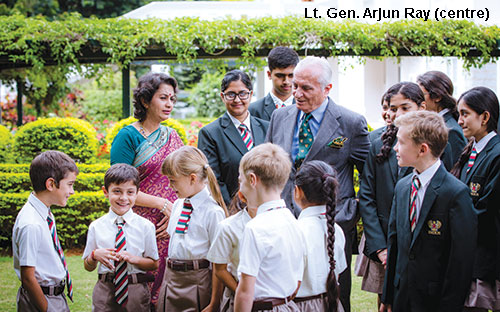 Lt. Gen (Retd.) Arjun Ray, PVSM, VSM is the founding managing director and chief executive of the Bangalore-based Indus Trust (regstd.2000), constituted by Silicon Valley entrepreneur Dr. Kumar Malavalli, Bangalore-based real estate developer Sushil Mantri and industrialist H.B. Jairaj. During the past 18 years, the trust has established three Indus International schools in Bangalore, Pune and Hyderabad. In the latest EducationWorld India School Rankings 2018-19, all three Indus International schools are ranked among the Top 10 nationwide in the international co-ed day-cum-boarding schools category. In particular, the Indus International School-Bangalore (IIS-B) has been ranked #1 for seven years consecutively. Currently IIS-Bangalore has 1,095 students, including 370 from 30 countries, and 145 teachers (including 11 expatriates) on its muster rolls.
Lt. Gen (Retd.) Arjun Ray, PVSM, VSM is the founding managing director and chief executive of the Bangalore-based Indus Trust (regstd.2000), constituted by Silicon Valley entrepreneur Dr. Kumar Malavalli, Bangalore-based real estate developer Sushil Mantri and industrialist H.B. Jairaj. During the past 18 years, the trust has established three Indus International schools in Bangalore, Pune and Hyderabad. In the latest EducationWorld India School Rankings 2018-19, all three Indus International schools are ranked among the Top 10 nationwide in the international co-ed day-cum-boarding schools category. In particular, the Indus International School-Bangalore (IIS-B) has been ranked #1 for seven years consecutively. Currently IIS-Bangalore has 1,095 students, including 370 from 30 countries, and 145 teachers (including 11 expatriates) on its muster rolls.
What in your opinion are the three defining characteristics of IIS preschool to class XII education?
IIS-Bangalore has been top-ranked for seven years consecutively for the following reasons: Firstly, our focus on leadership development of students and teachers. The prime objective in all our schools is to prepare our students for a VUCA — volatile, uncertain, complex and ambiguous — future. To this end, a leadership curriculum has been introduced in all classes from K-12; outbound leadership training is conducted at our specially designed Indus Leadership School in Kanakapura, Bangalore for students and teachers of all IIS schools for five days annually; and all children are engaged in community service projects in every school’s neighbourhood. The Indus Equal Opportunity School for children below the poverty line is sited on the IIS-B campus. It’s ‘equal opportunity’ because underprivileged students receive the same resources as main school students.
Secondly, we are committed to high quality co-curricular and sports education, but not at the cost of academic excellence. And thirdly, we are committed to rigorous and continuous teacher development and innovation from preschool to class XII. A majority of our teachers are trained and up-skilled at our Indus Training and Research Institute.
How satisfied are you with the academic track record of IIS-B?
Unlike several high-ranked schools which admit students selectively after testing, IIS-Bangalore — and all IIS schools — is an open, all-inclusive school. For an all-inclusive school to average a score of 38 — out of the maximum possible 45 — in the IB Diploma school-leaving exam, with 21 IIS-B students scoring 40 and above in the 2018 examination, is quite satisfactory.
How well-prepared are IIS-B alumni for higher education and adult workplaces?
All reports and accounts that we have received indicate that IIS alumni are readily accepted by the best universities in India and worldwide, and in multinational companies.
What are the new pedagogy/ education innovations, if any, introduced in IIS schools?
Among the noteworthy innovations we have introduced in IIS-B are: collaborative learning between students and teachers and artificial intelligence. IIS-B has innovated the world’s first teacher-robot, currently undergoing prototype trials. They will be introduced in large numbers from the start of the new academic year 2019-20 in all schools. Simultaneously, we have designed self-directed learning programmes, necessitating minimal use of technology.
Good Shepherd International School, Ooty
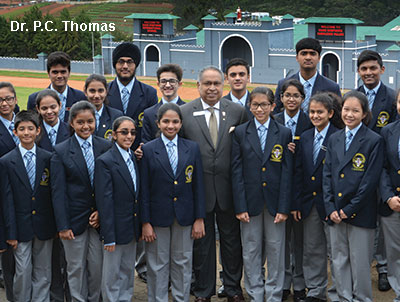 Sited on two clean-green campuses in Ootacamund aka Ooty (Tamil Nadu), 7,200 ft. above mean sea level, spanning 180 acres and equipped with superb globally comparable academic, co-curricular and sports education infrastructure, the CISCE (Delhi), CAIE (UK) and IB (Geneva)-affiliated wholly residential Good Shepherd International School (GSIS) was founded by Dr. P.C. Thomas, an English alumnus of Kerala University with a doctorate in education management from Pacific Columbia University, California, in 1977. Currently, GSIS has 791 students including 113 from abroad mentored by 191 teachers (including seven expatriates) on its muster rolls.
Sited on two clean-green campuses in Ootacamund aka Ooty (Tamil Nadu), 7,200 ft. above mean sea level, spanning 180 acres and equipped with superb globally comparable academic, co-curricular and sports education infrastructure, the CISCE (Delhi), CAIE (UK) and IB (Geneva)-affiliated wholly residential Good Shepherd International School (GSIS) was founded by Dr. P.C. Thomas, an English alumnus of Kerala University with a doctorate in education management from Pacific Columbia University, California, in 1977. Currently, GSIS has 791 students including 113 from abroad mentored by 191 teachers (including seven expatriates) on its muster rolls.
What in your opinion are the three defining characteristics of GSIS in class I-XII education?
The education that GSIS provides its student community is designed to stimulate their latent entrepreneurial heritage. Our academic focus is on developing the creativity, innovative thinking and problem-solving skills of GSIS students. Secondly, as a wholly residential school, we pride ourselves on providing personal attention — “a home away from home” — and excellent pastoral care. Thirdly, the 21st century life skills that our students learn here is a hallmark of GSIS education.
How satisfied are you with the academic track record of GSIS ?
Our vision and mission is to provide our students the finest, globally comparable holistic education. Our school-leaving students are warmly welcomed into leading universities around the world and are well-placed in academia and industry in India and abroad.
How well-prepared are GSIS alumni for higher education and adult workplaces?
Through standardised aptitude tests and regular counselling sessions about career opportunities available around the world, our high school and higher secondary students are assisted to identify their choice of universities and career paths.
We derive considerable pride from the fact that all our school-leavers are well placed in the leading universities of India and around the world pursuing professional courses in various fields. They are all flying high and keep in touch with their alma mater. In short, GSIS alumni are well prepared for higher education and adult workplaces.
What are the new pedagogy/ education innovations, if any, introduced in GSIS?
Teaching and learning in GSIS is self-directed and personalised. This prepares our students to become transformational life-long learners.
Any other comment?
At GSIS, our objective is to provide children of this generation the best academic, co-curricular and sports education, as good as any worldwide. We are confident that every student stepping out of GSIS will be a good and contributing global citizen.
Woodstock International School, Mussoorie
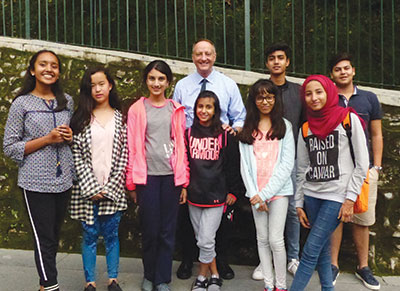 An alum of Nottingham and Oxford universities (UK) and former principal of Aiglon College, Switzerland and Mahindra United World College, Pune, Dr. Jonathan Long is principal of the Woodstock International School (WIS), Mussoorie.
An alum of Nottingham and Oxford universities (UK) and former principal of Aiglon College, Switzerland and Mahindra United World College, Pune, Dr. Jonathan Long is principal of the Woodstock International School (WIS), Mussoorie.
Woodstock is India’s #1 international residential school in 2018-19 and top-ranked for four years previously by over 15,000 sample educators, principals, parents and teachers in the annual EW India School Rankings.
What in your opinion are the three defining characteristics of Woodstock International K-12 education?
First, a distinctive philosophy of education and guiding principles which define all aspects of life and work at the school. Secondly, our admissions policy which deliberately creates a diverse students community across a range of parameters and thidly, focus on development of the whole child.
How satisfied are you with the academic track record of WIS?
Over the past five years, our academic track record has improved substantially. Our public exam results are above the global average and our students are warmly welcomed into leading universities worldwide.
How well-prepared are WIS alumni for higher education and adult workplaces?
Very well prepared. Our research indicates that Woodstock International graduates are sought after in the workplace and valued for their ability to thrive in challenging environments globally.
What are the new pedagogy/ education innovations, if any, introduced in WIS?
Our educational culture is to provide challenging, engaging and experiential learning experiences to all students. Recent innovations include inauguration of our Centre for Imagination which pilots innovations in the classroom and allows students to experience alternative approaches to learning.























